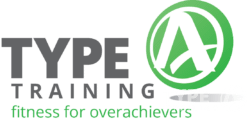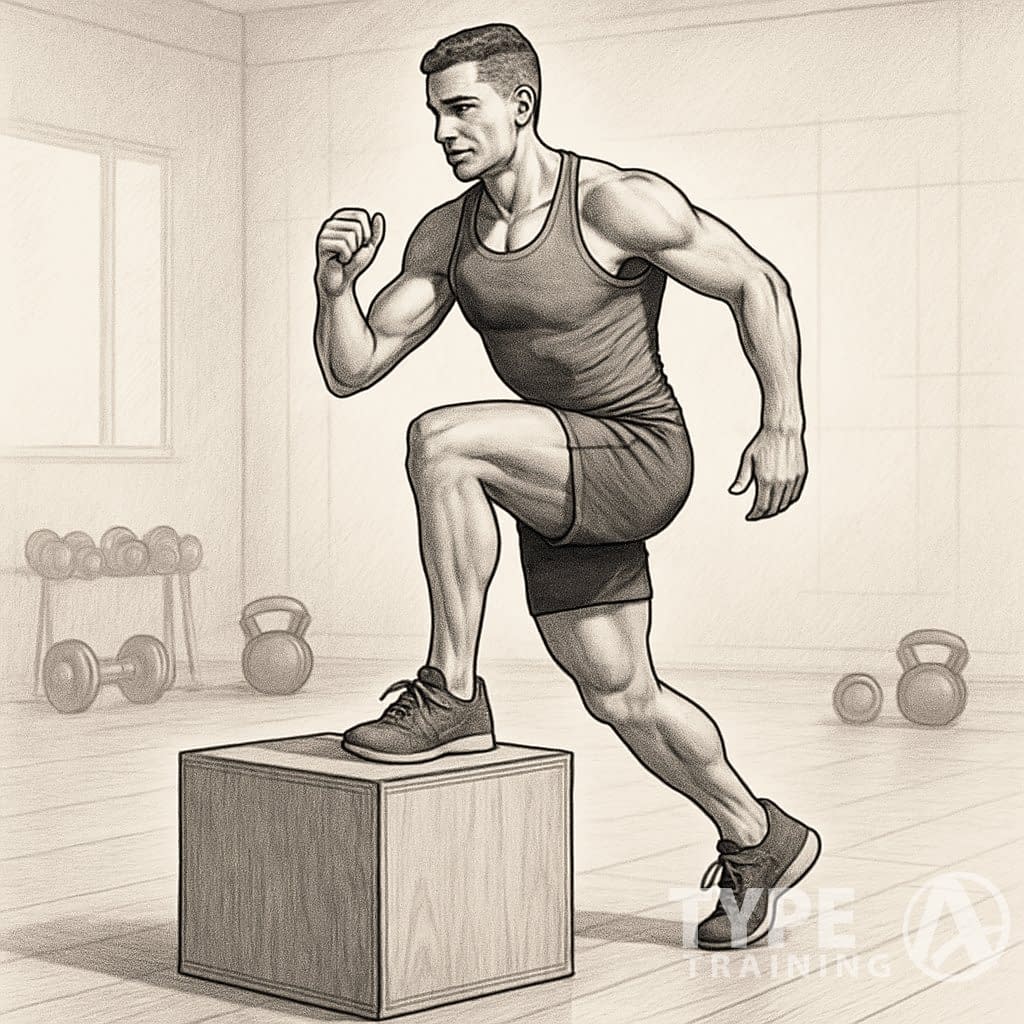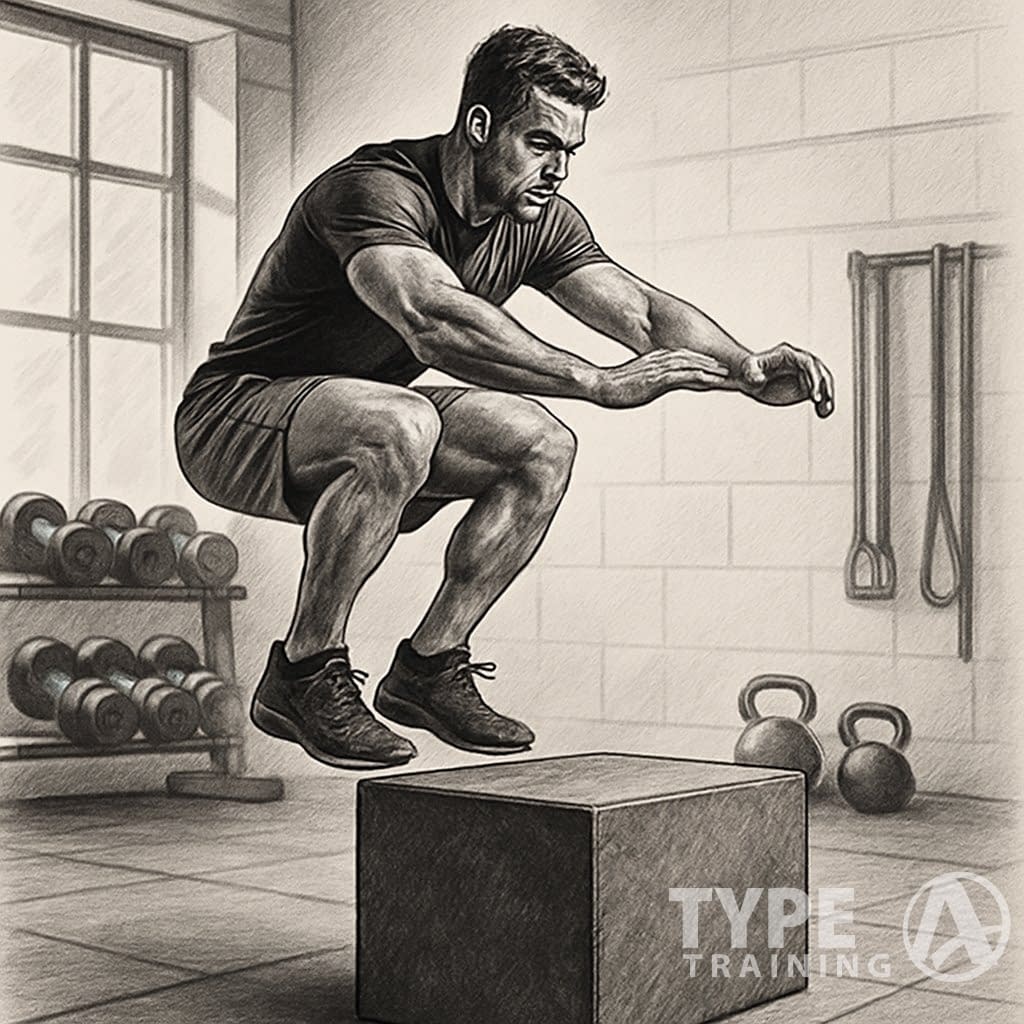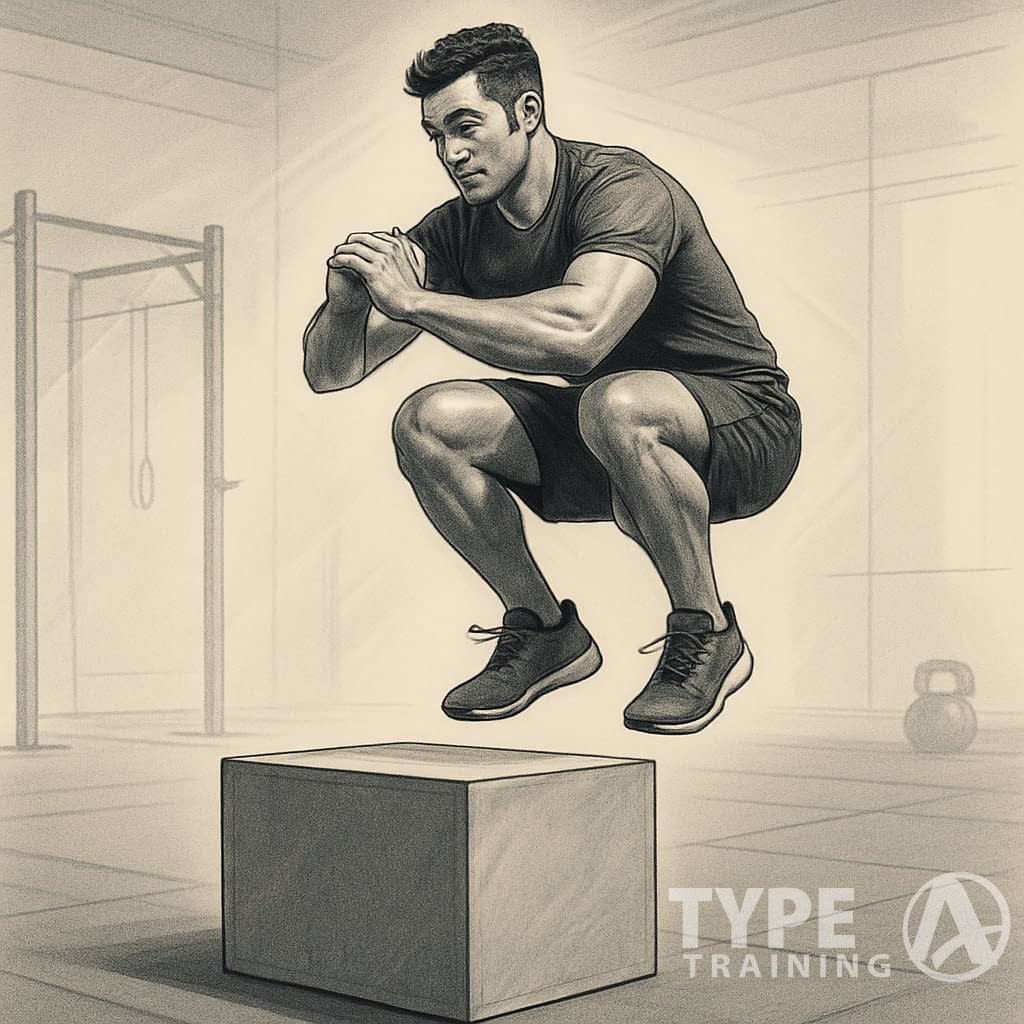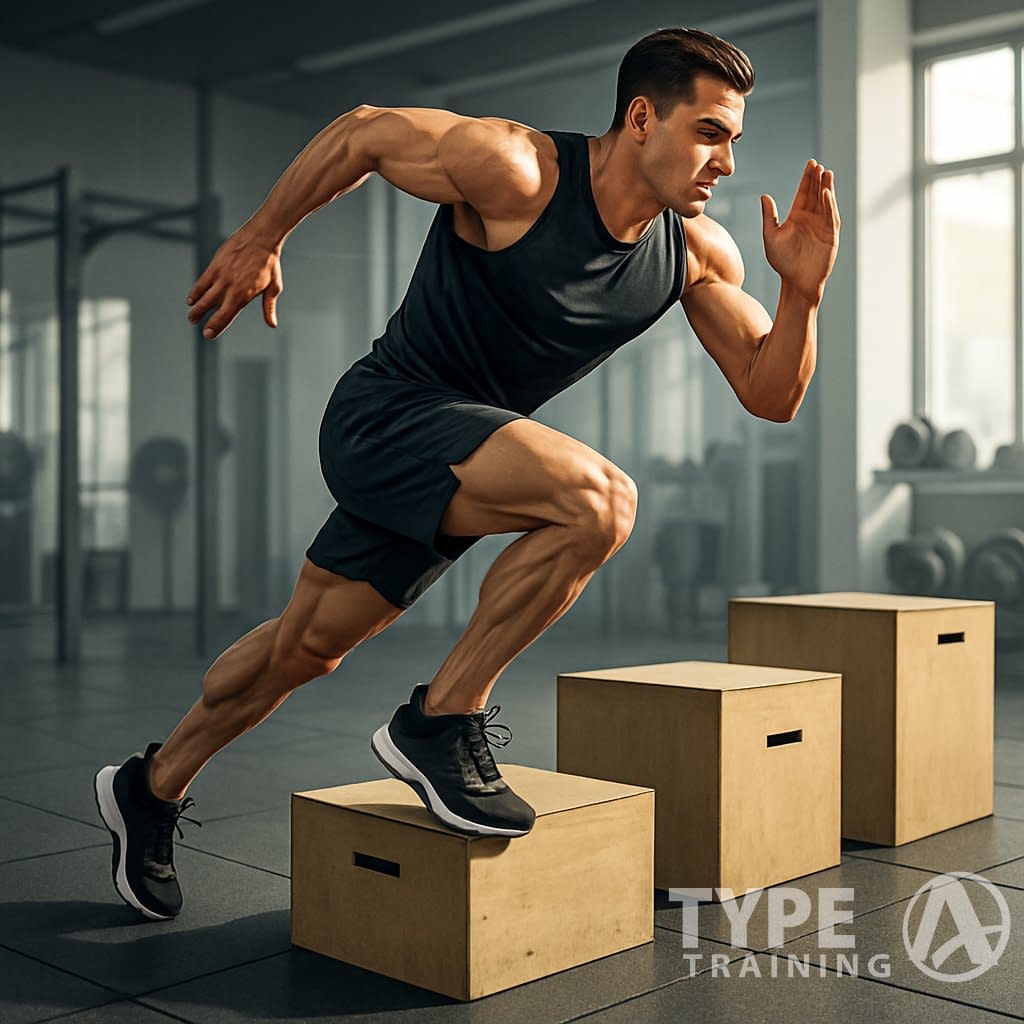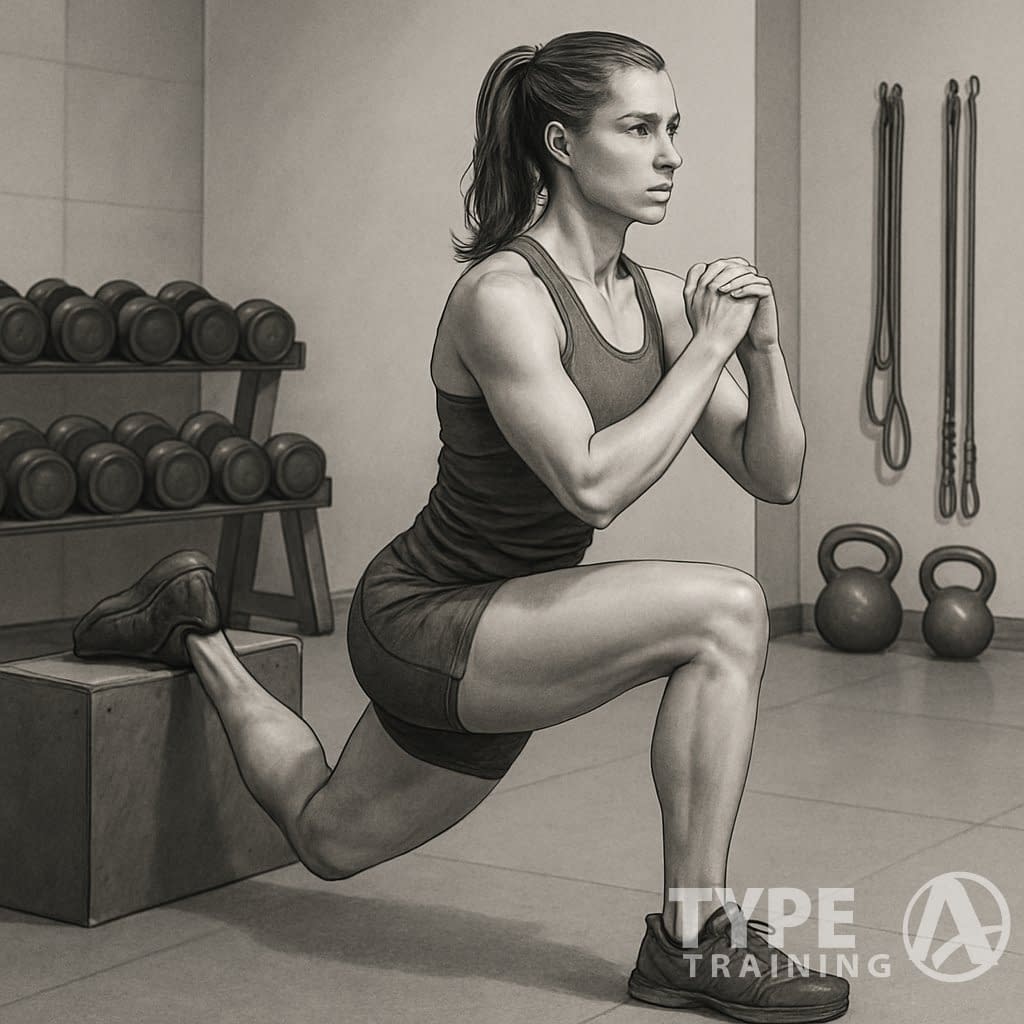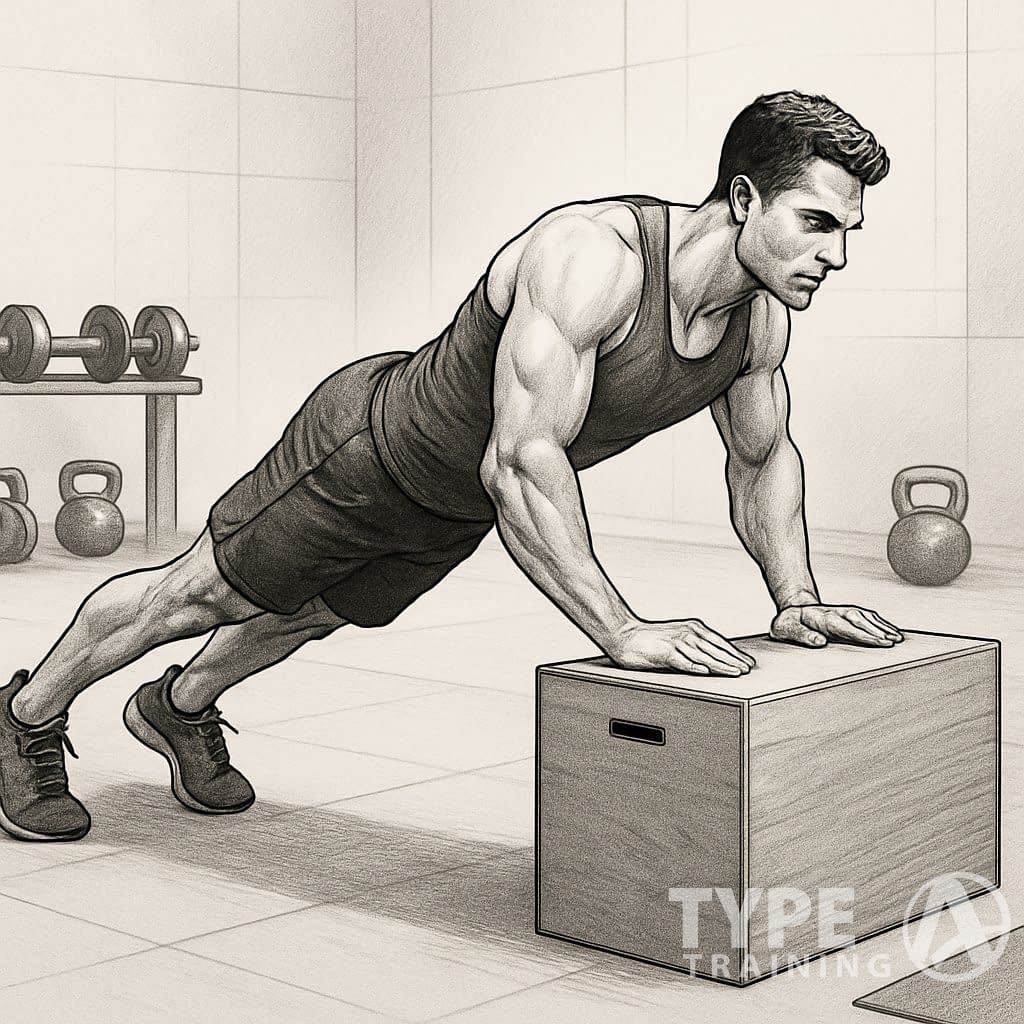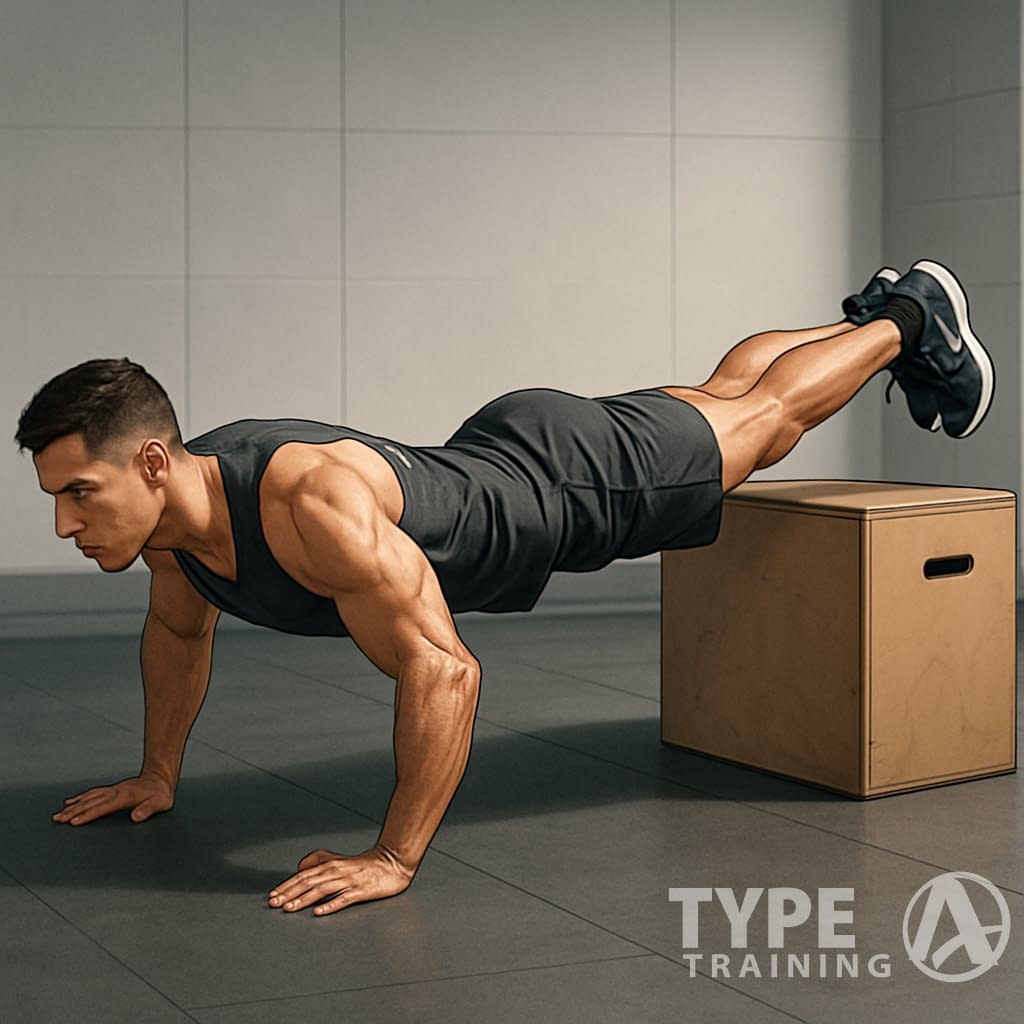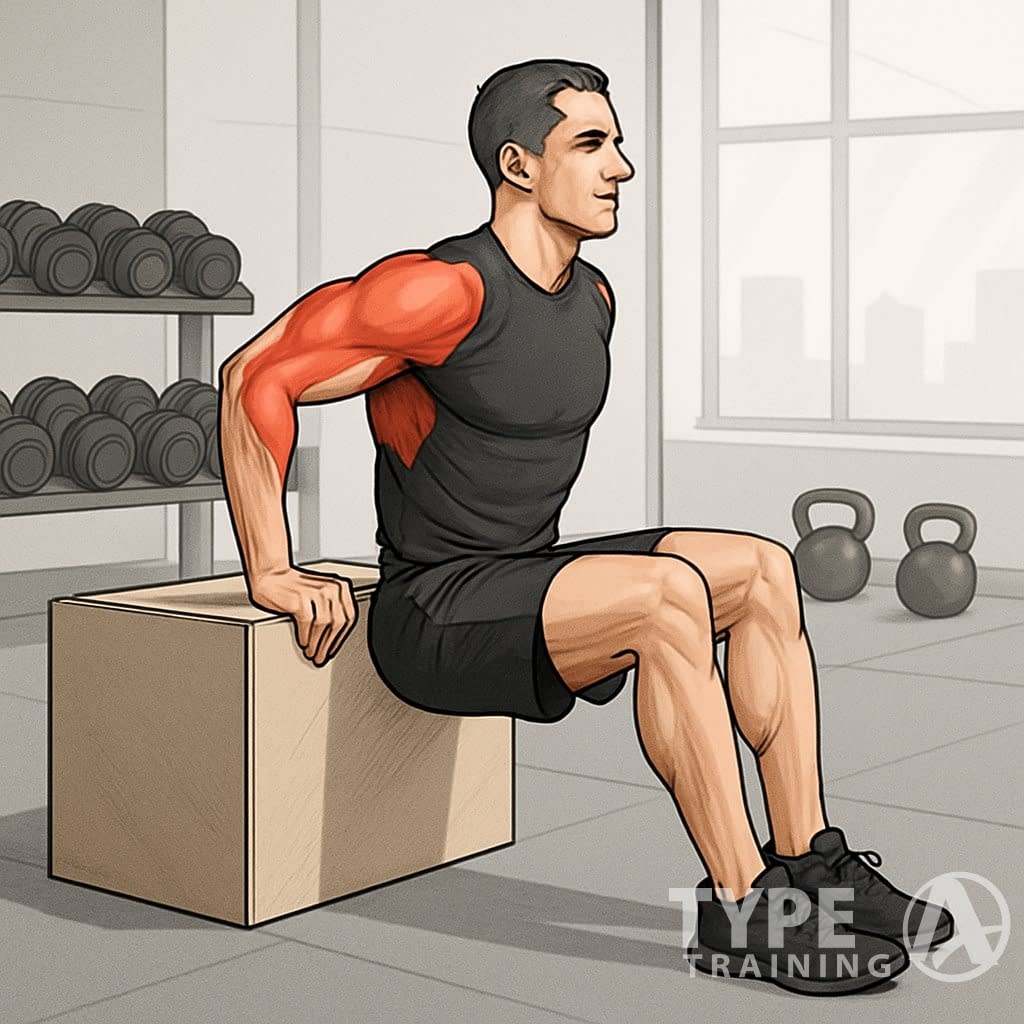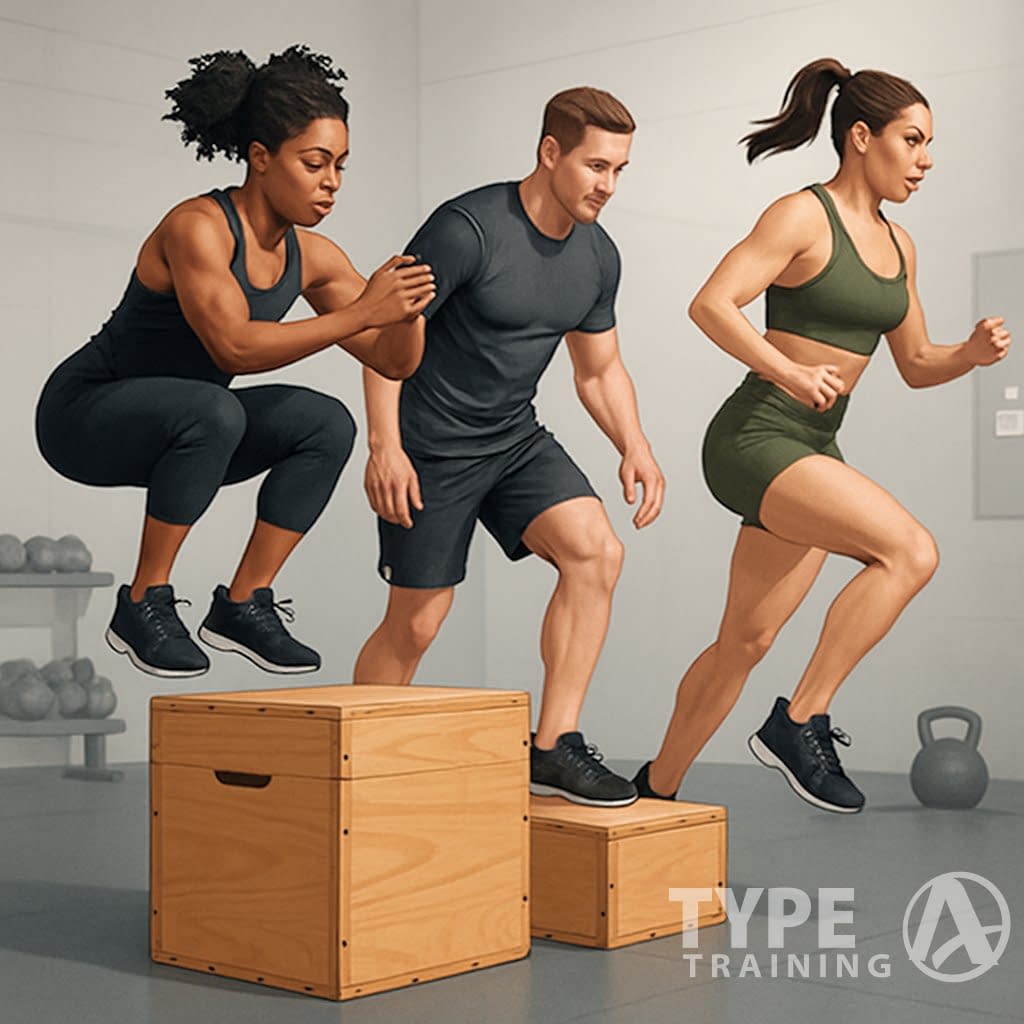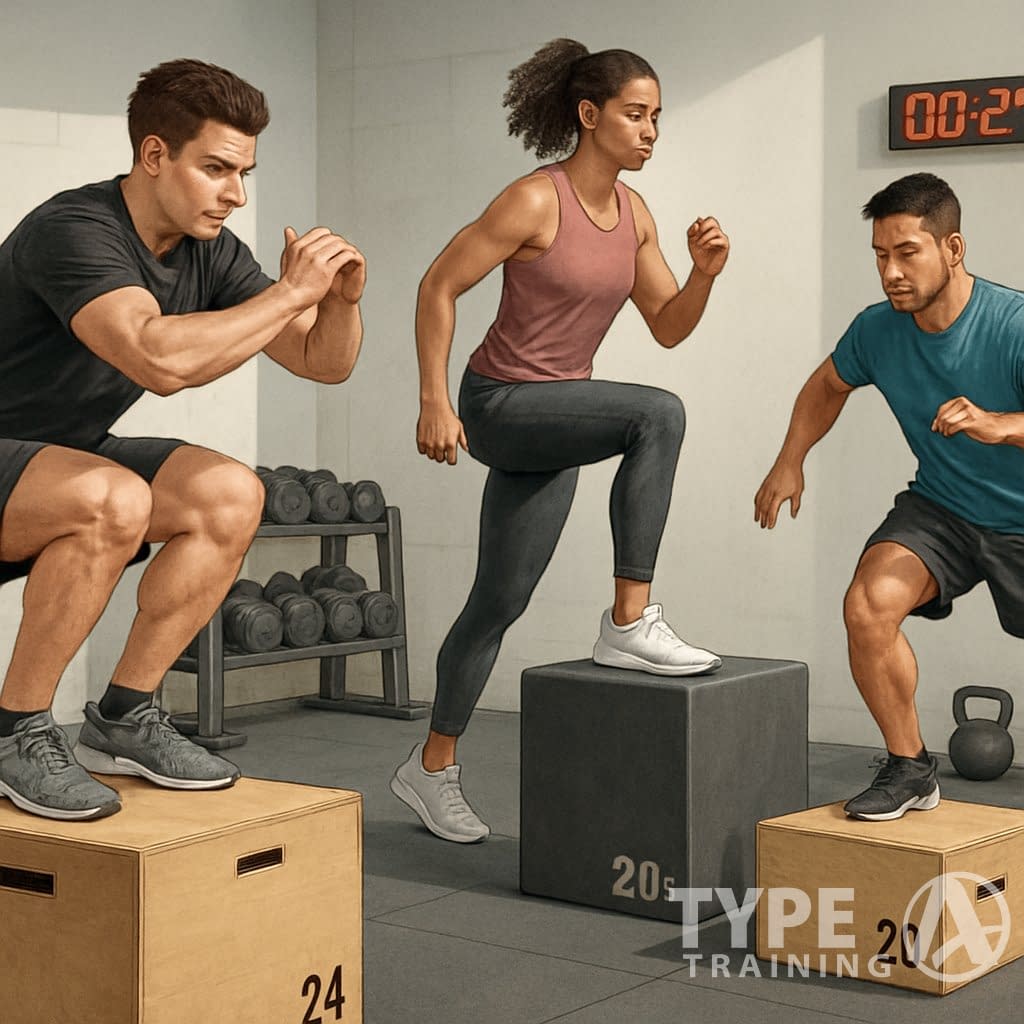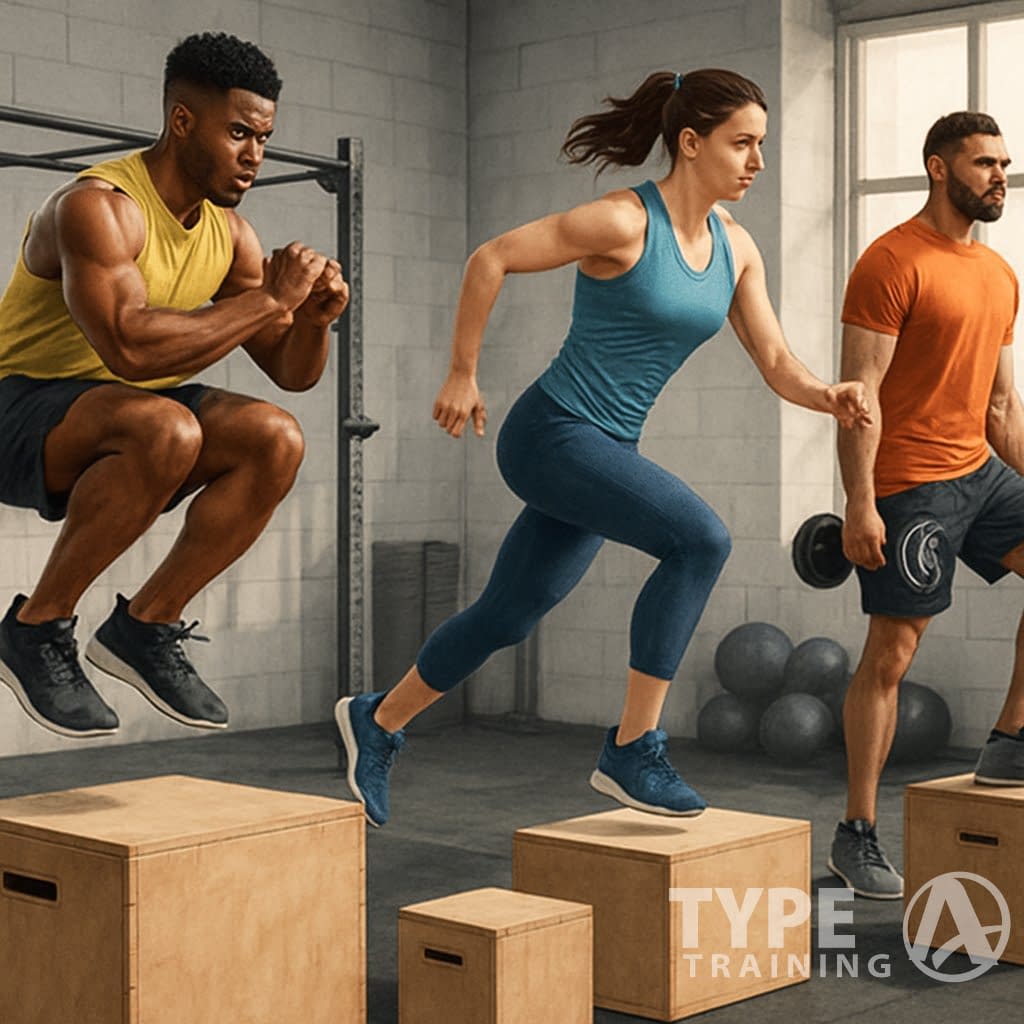A plyo box can totally change up your workouts, letting you build power, strength, and endurance without fancy gym machines. This simple tool works your quads, hamstrings, calves, and even your triceps through all sorts of bodyweight moves—think jumping, stepping, and more.
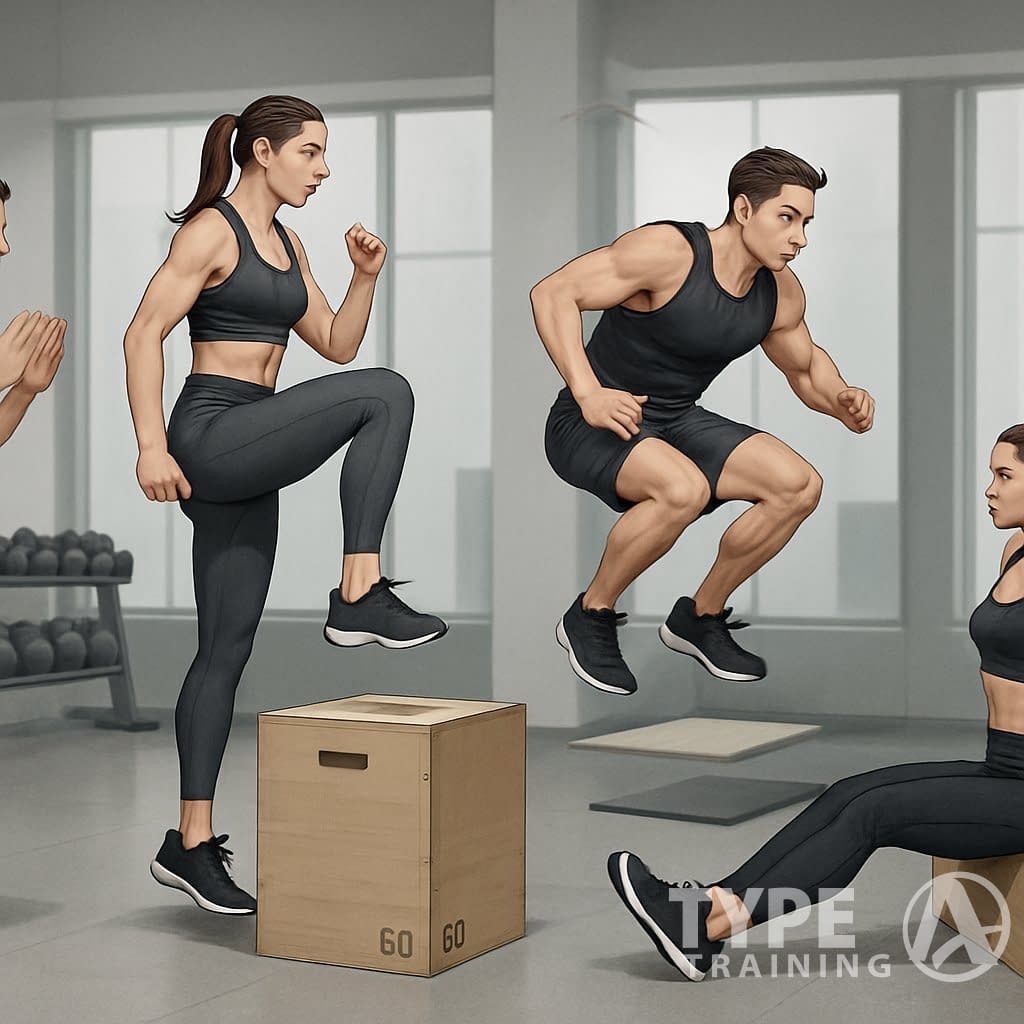
Want to kick up your cardio or focus on strength? Plyo box exercises give you options for pretty much any fitness goal. These movements challenge your hips, improve stability, and you can mix them with other exercises for a full workout that boosts both power and endurance.
Key Takeaways
- Plyo boxes offer full-body workouts that target major muscle groups and improve power and stability.
- These exercises blend cardio and strength training, and you can do them pretty much anywhere.
- Smart programming with plyo boxes builds explosive power and helps lower your risk of injury.
Front Box Step-Up
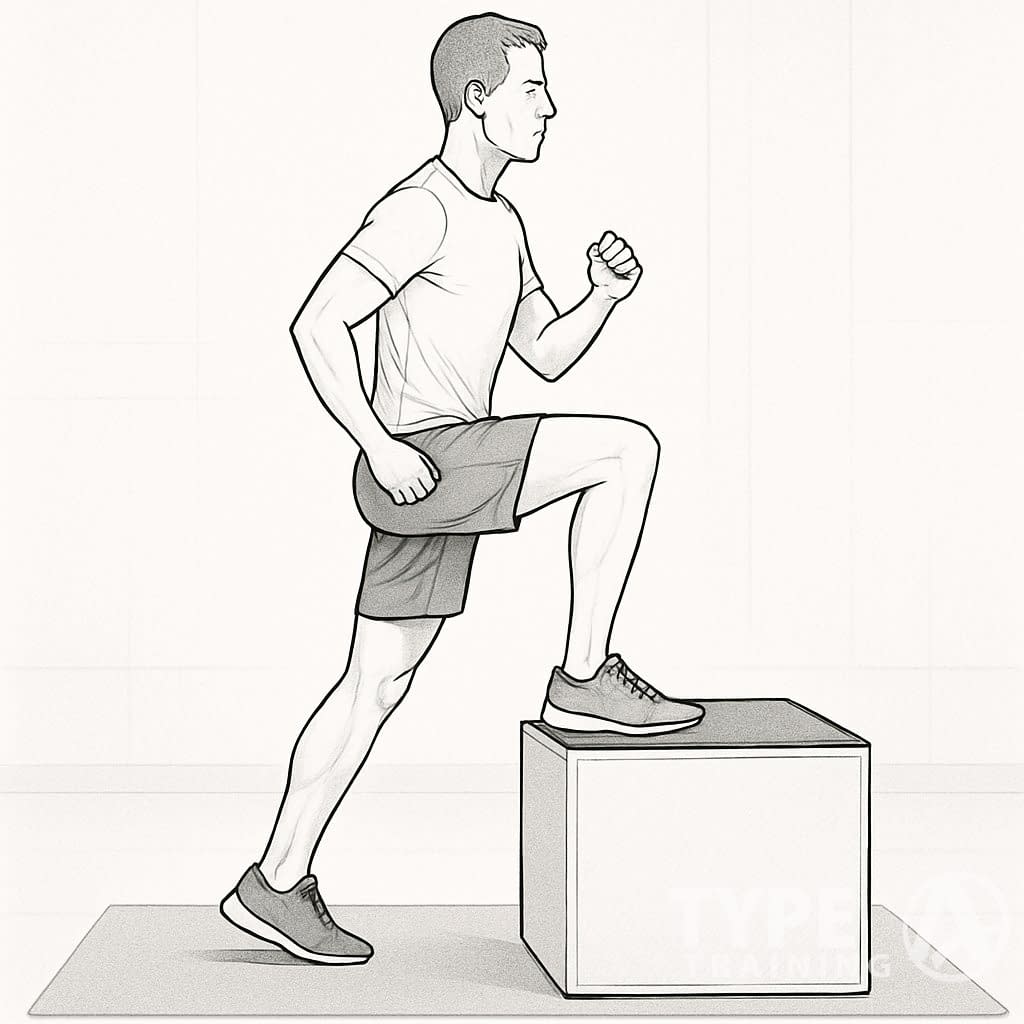
Popular posts:
Advantages of the Front Box Step-Up
The front box step-up hits several muscle groups and helps you improve balance and coordination. It really targets your glutes and quads with single-leg movement.
Key benefits include:
- Quick setup – Easy to use as a warm-up or as a finisher
- Single-leg training – Builds muscle and can help protect your joints
- Compound movement – Works multiple joints and is a solid squat alternative if you’re dealing with injuries
- Balance improvement – Stepping onto a box really challenges your stability
The single-leg focus helps even out muscle imbalances between your legs. That can make a difference in how you move, both in workouts and just day-to-day stuff.
Performing the Front Box Step-Up
Stand facing the plyo box, toes a few inches from the base.
Step-by-step technique:
- Place your foot – Lift one leg and put your whole foot on top of the box
- Press upward – Push through your heel and straighten your knee and hip to lift up
- Lower slowly – Reverse the move with control, bringing your other foot down to lightly touch the ground
- Repeat – Do your reps, then switch legs
Important safety note: Always make sure your whole foot is on the box so you don’t scrape your shins or lose balance. Nobody wants that.
Side Box Step-Up
Benefits of the Side Box Step-Up
The side box step-up targets muscles that regular step-ups often ignore. It focuses on your hip muscles that move your leg in and out from your body’s center.
Key advantages include:
- Better sports performance – Great for quick direction changes in sports like basketball, soccer, or tennis
- Improved balance – Standing sideways on the box is way more challenging for your stability
- Stronger hip muscles – Hits the adductors and abductors that regular squats just don’t reach
- Better knee health – Strengthens the muscles around your knees for extra support
This move also mimics everyday actions, like stepping over stuff or moving sideways through a crowd.
How to Perform the Side Box Step-Up
Stand next to the plyo box with your side facing it. If your hips feel tight, use a lower box.
Exercise steps:
- Put your whole foot on the box
- Keep your torso upright
- Push through your heel to stand up on the box
- Stand tall at the top
- Lower yourself slowly back down
- Keep most of your weight in your working leg
Important form tips:
- Don’t lean to one side during the move
- Use the full range of motion
- Lower yourself with control, not a quick drop
Box Jump
The box jump is a classic for building explosive lower body power. You have to generate a ton of force through your legs to get your body up onto a raised platform. Your quads, hamstrings, and glutes all work together here.
Box jumps use just your body weight, so they’re easier on your joints but still super effective.
Advantages of Box Jumps
Box jumps have a bunch of benefits:
- Beginner-friendly – Start with low boxes and work your way up
- No fancy gear needed – Any sturdy platform can work
- Highly adaptable – Change the height, reps, or sets to fit your goals
- Builds explosive power – Trains your fast-twitch muscle fibers
- Improves coordination – You need good timing and body control
Performing the Box Jump Technique
Stand facing the box, feet about shoulder-width apart. Stretch your arms overhead to start.
Drop into a quarter squat while swinging your arms back. That helps build momentum.
Explode up, extending your hips, knees, and ankles at the same time. Swing your arms forward and up for extra lift.
Land softly on the box, knees bent to absorb the impact. Don’t land stiff-legged.
Training Tip: For max power, do 3-5 explosive reps with a higher box. For conditioning, use a lower box and crank out more reps and sets.
Always step down between reps. Jumping down repeatedly is rough on your joints.
Box Jump Over
Advantages of the Box Jump Over
This one really gets your heart rate up compared to regular box jumps. You’ll definitely feel your cardio system working as you move back and forth across the box.
Box jump overs help you build coordination and agility. Changing directions quickly forces your body to adjust and stay in control. It’s a great way to get more athletic.
Your legs get better at landing safely, too. Every time you hop down, your muscles learn to absorb the impact, which protects your joints.
Since you’re always moving, you’ll burn more calories than just jumping in place.
How to Perform the Box Jump Over
Start with a normal box jump onto the platform. Land with both feet on top, knees slightly bent.
Instead of stepping down, jump off the far side. Land softly on the balls of your feet, knees bent to cushion the landing.
Turn around and jump back onto the box from the other side. Move fast but stay in control. Make sure both feet land solidly each time.
Important tip: Want to make it tougher? Add a burpee after each jump over. That’ll really work your whole body.
Keep your movement smooth and don’t rush if you feel off-balance. Better safe than sorry.
Box Sprints
Advantages of Box Sprint Training
Box sprints build speed and agility by forcing your feet to move fast. You’ll feel your heart rate climb and your legs working overtime on coordination.
Your reaction time improves as you practice switching feet quickly. This move also helps you balance better on the balls of your feet. Athletes use it to get quicker and sharpen their footwork.
Performing Box Sprint Technique
Stand in front of the box, facing forward. Put one foot on top, heel hanging off just a bit.
Key Steps:
- Balance on the balls of your feet
- Switch foot positions quickly
- Keep one foot on the box, one on the ground
- Alternate as fast as you can
- Stay smooth, don’t bounce too much
Focus on fast, controlled movements. Keep your jumps low for the best results.
Bulgarian Split Squat
The Bulgarian split squat is hands-down one of the best single-leg exercises you can do with a plyo box. You put your back foot up on the box and use your front leg to support most of your weight. That extra elevation adds range of motion and makes you work harder to balance—something regular squats just can’t match.
This move mainly targets your quads, but your glutes and hamstrings get in on the action too. Start with just your body weight, or if you’re feeling strong, add some dumbbells, kettlebells, or even a barbell as you progress.
Advantages of the Bulgarian Split Squat
The Bulgarian split squat packs a punch for lower body development. You’ll notice muscle growth in your quads, glutes, and hamstrings thanks to the single-leg focus.
Your balance and stability get a serious boost. Controlling your body on one leg fires up your core muscles and sharpens proprioception.
Hip flexibility improves as you drop into the deep position. That stretch lengthens your hip flexors and helps you move better overall.
Because it’s unilateral, you can tackle muscle imbalances between your legs. Each leg has to pull its own weight—no cheating from your stronger side.
Performing the Bulgarian Split Squat
Stand about two feet in front of your plyo box or bench. Rest the top of your rear foot on the surface behind you.
Keep your front foot flat and your weight balanced. Lower yourself by bending your front knee and hip together.
Go down until your front thigh is parallel to the floor, or as low as you can comfortably manage. Most of your weight should stay on your front leg, with your back leg just helping a little.
Push through your front heel to come back up. Finish all reps on one leg, then switch sides.
Want more resistance? Hold dumbbells at your sides or put a barbell across your upper back. Start light until you nail the movement, then work up to heavier weights.
Box Push-Ups
Advantages of Box Push-Ups
Box push-ups are a solid way to build upper body strength. If regular push-ups feel out of reach, these are a friendlier option.
You’ll work your chest, shoulders, and arms at a level that’s manageable. It’s easy to switch up your hand position on the box, so you can target different muscles as you go.
The elevated surface makes the movement less difficult than floor push-ups. And you can dial in the intensity—pick a taller box for easier reps or a shorter one to ramp up the challenge.
Steps for Performing Box Push-Ups
Place your hands on top of the box, shoulder-width apart. Grip the edges if you need extra stability.
Set your body in a straight line from head to feet. Stretch your legs back into a plank position.
Lower your chest toward the box by bending your elbows. As you go down, squeeze your shoulder blades together.
Push back up to the top. Keep your core tight the whole time. Repeat for as many reps as you want.
Elevated Foot Push-Up
Advantages of the Elevated Foot Push-Up
The elevated foot push-up turns a basic move into a real test. When you put your feet up on a plyo box, more weight shifts to your upper body.
This angle hits your chest muscles differently than regular push-ups. It’s a fresh challenge for your muscle fibers.
Your triceps have to work harder here. The leverage changes, so you end up pushing more of your body weight than with standard push-ups.
This makes it a great way to build strength without needing extra equipment. Your shoulders get in on the action too, stabilizing at that steeper angle.
It’s a sneaky way to work on shoulder strength and stability.
Steps for the Elevated Foot Push-Up
Put both feet on top of the plyo box. Keep your legs straight and together, hands on the ground, shoulder-width apart.
Set up in a plank with arms extended. Your body should form a straight line from head to feet, with your head lower than your feet.
Key Form Points:
- Keep your core tight throughout the movement
- Lower yourself slowly and with control
- Focus on squeezing your chest muscles as you push up
- Maintain the straight body line
Lower your chest toward the ground by bending your elbows. Push back up to the top. Hit your target rep count, but keep your form sharp.
If you’re new to this, try incline push-ups instead. Just put your hands on the box and feet on the ground to make things easier.
Plyo Box Dip Exercise
Advantages of Box Dips
Box dips are a straightforward way to hammer your upper body without fancy gear. This move hits your chest, shoulders, and triceps hard.
Key muscle benefits:
- Triceps: They’re the main drivers and get a strong workout
- Chest: Especially the lower part gets plenty of action
- Shoulders: Front delts work to keep things stable
Want to go heavier? Put some weight on your lap. That way, you can make dips tougher as you get stronger. Box dips also break the monotony of push-ups but deliver similar muscle-building perks.
Performing Box Dips Correctly
Start by sitting at the edge of your plyo box. Grip the edge with your palms facing down.
Step-by-step process:
- Stretch your legs straight out in front
- Slide forward off the box edge
- Lower yourself slowly and stay in control
- Stop if you feel a shoulder stretch or any discomfort
- Push back up until your arms are straight
Smooth, controlled movement is the goal. Only go as deep as your shoulders feel safe—never force it.
Important note: Warm up your shoulders well before you start. This exercise does need good shoulder flexibility to avoid injury.
Benefits of Plyo Box Training
Multiple Exercise Options
A plyo box gives you way more workout options than it looks like at first. You can do dozens of moves for upper and lower body.
The box works as a platform for stepping, jumping, and strength training exercises. Use it for push-ups, tricep dips, Bulgarian split squats, and lateral step-ups.
Common plyo box exercises include:
- Box jumps and step-ups
- Incline push-ups and decline variations
- Single-leg squats and lunges
- Plyometric lateral bounds
That kind of variety means you can put together full workouts with just this one piece of gear.
Explosive Strength Building
Plyometric training with a box is all about building explosive power. Quick, powerful moves train your body to generate force fast.
Box jumps and similar exercises teach your muscles to produce max force in minimal time. This can really help your performance in sports—or just life.
Plyometrics also help your muscles contract more efficiently. You get strength and speed at the same time.
Athletes especially love plyo box training since it mimics the quick, powerful moves most sports demand.
Simple and Practical
The plyo box is refreshingly simple and easy to use. No confusing assembly, no maintenance headaches.
A good box barely takes up space in your home gym but gives you tons of training value. You can get started right away—no setup needed.
Most plyo boxes are built to last. No electricity, no moving parts, no special storage. Just you and your workout.
Structuring Your Plyo Box Workouts
Plyo box exercises fit anywhere in your training session. You can hit different muscles just by switching up when you do them.
For Upper Body Focus:
- Add decline push-ups as a finisher
- Use the box for elevated hand work during chest and shoulder training
For Lower Body Sessions:
- Work in Bulgarian split squats using the box
- Try single-leg step-ups between strength sets
For Cardio Training:
Go for short, sweaty circuits:
- 5-minute AMRAP with box jump overs
- Mix in burpees and decline mountain climbers
- Keep your heart rate up and the pace high
Power Development Strategy:
Put explosive moves at the start of your workout. You’ll want fresh muscles to get the most out of them.
| Goal | Placement | Exercise Type |
|---|---|---|
| Power | Beginning | Box jumps, explosive moves |
| Strength | Middle | Step-ups, Bulgarian splits |
| Conditioning | End | Jump overs, circuits |
Plan your plyo box work around your energy. Power training needs your best effort, while conditioning can finish you off when you’re already tired.
Final Word
Plyo boxes? Honestly, they’re a solid choice for full-body training. You can use them at home or in any gym, and the variety of moves is impressive.
You’ll get to target both your upper and lower body muscles. That’s a win for anyone who likes efficient workouts.
Key Benefits:
- Build explosive power and strength
- Improve your endurance levels
- Work multiple muscle groups at once
- Great for beginners and advanced users
These training tools can really help you chase your fitness goals in different ways. Maybe you want to boost power, or maybe you’re just trying to last longer through a tough session.
New folks at the gym often find plyo boxes less intimidating than a stack of heavy weights. Makes sense, right?
The design’s straightforward, which is honestly refreshing. You just change the box height or how fast you move, and suddenly you’ve got a totally new challenge.
Plyo boxes fit just about anyone’s routine, no matter where you’re starting from. If you want effective results without overcomplicating things, they’re worth a try.
